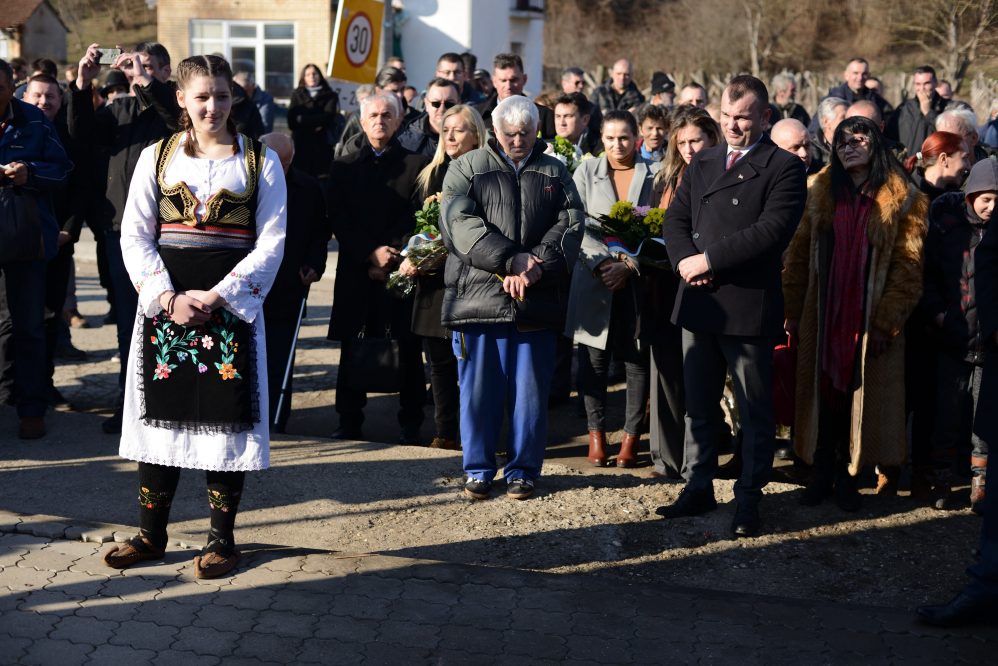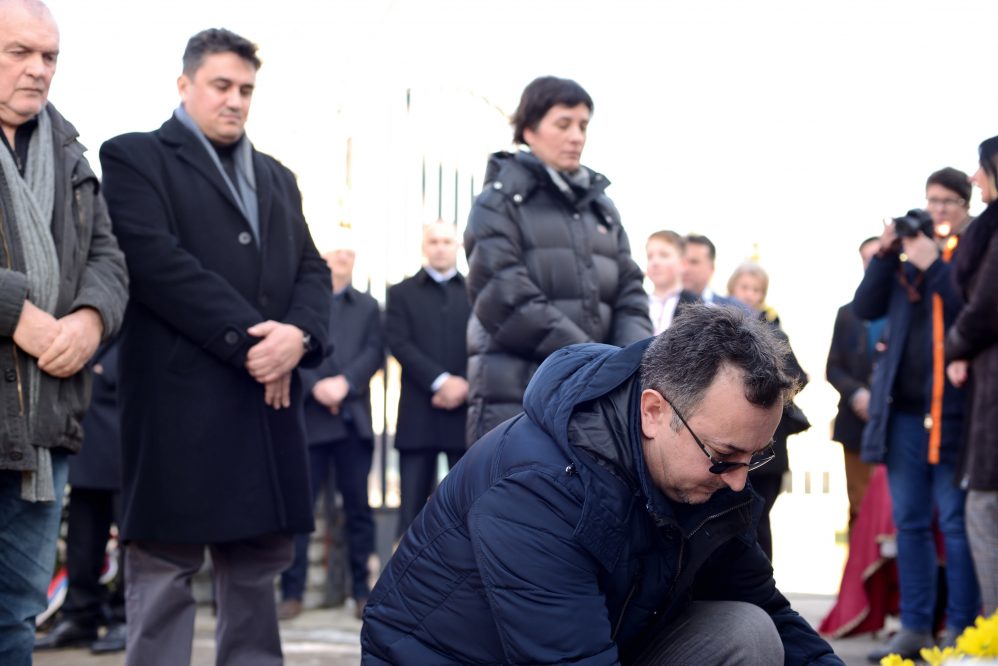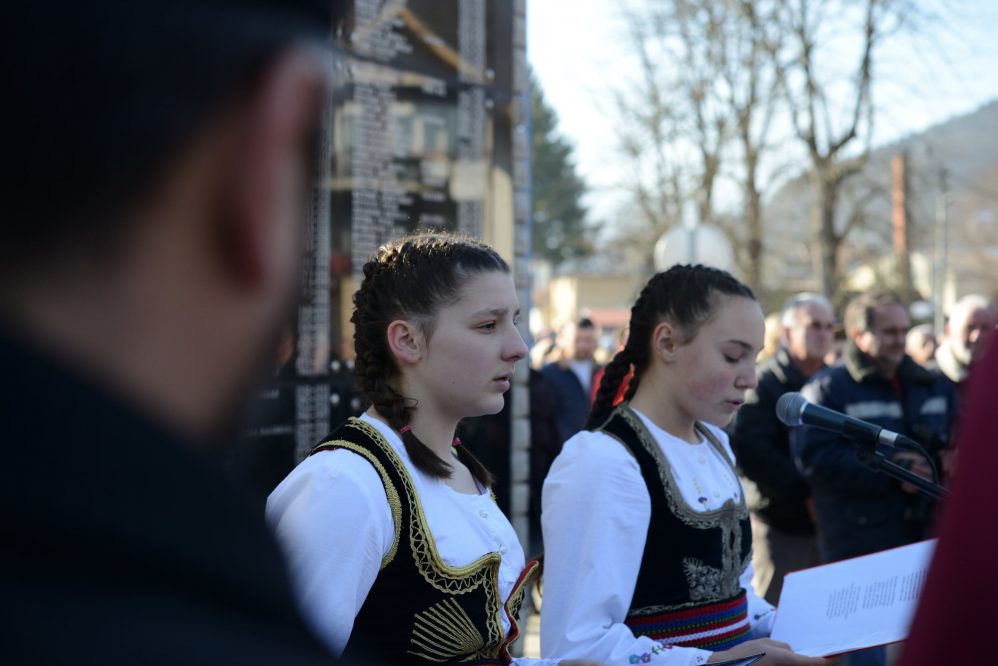For a number of years, at the Centre for Nonviolent Action (CNA), we have been trying to find ways for our group of war veterans to join the commemoration dedicated to Serb civilians and soldiers killed in Skelani in the Srebrenica Municipality and together honour these victims who were killed on 16 January 1993. On that day, in an attack launched by units of the Army of the Republic of Bosnia and Herzegovina (ARBiH) in the area of Skelani and the surrounding settlements, 34 civilians, including women and children and the elderly, and 35 members of the Army of Republika Srpska (VRS) were killed. Following media coverage of this commemoration and hearing statements from the victims’ families, it was clear that they felt wronged because no one had been held accountable for this crime committed against civilians. ‘The world does not see our pain, the world only sees what happened here in July 1995,’ one woman said in a TV report. It is evident that the absence of court sanctions is seen as a grave injustice and they often point out how their victims are considered less worthy, and that both the domestic and international judiciary is biased because it only fully prosecutes perpetrators from the VRS and the Serb political leadership.
It was important for us to come and let these people know that they are not alone and that there are people, war veterans belonging to the same army as the perpetrators of the crime, who do not support that crime and do not stand behind it, but instead condemn it and welcome an opportunity to grieve for the lives lost.
Arrival
We have wanted to come here for a while, but were held back because we still had not established cooperation with VRS veterans’ organisations and Serb civilian and military victims’ associations in the area, so we could not hope for an invitation to join the commemoration, as no one was aware of our existence and our activities. We decided to contact people from Srebrenica who we thought could be of assistance and so we met with the Mayor of Srebrenica, the president of the Srebrenica Municipal Veteran’s Organisation, the president of the Srebrenica Municipal Organisation of Families of Prisoners of War, Fallen Fighters and Missing Civilians, and the president of the Srebrenica Municipal Committee of the Alliance of Independent Social Democrats (Savez nezavisnih socijaldemokrata, SNSD). We presented our plan to attend the commemoration with a group of thirty war veterans and asked to be included in the official protocol for laying wreaths. They expressed support for our initiative, but we never received an official invitation to the commemoration. Through subsequent contacts, we got the impression that no one had anything against our coming, but no one wanted to take on the responsibility of sending us an official invitation. Given this situation, we decided to attend the commemoration anyway, but with a smaller group.
The group comprised VRS veterans and disabled veterans from Šamac and Novi Grad, three in total, a former member of the Croat Defence Council (HVO) and prison camp survivor from Mostar, two Yugoslav Army veterans from Kruševac and a former member of ARBiH and the Ministry of Interior from Jajce, as well as seven CNA activists, including myself, also an ARBiH veteran. There were fourteen of us in all.
Skelani currently has the status of a local community, but had been a separate municipality a number of times in the past. The last time was from 1992 to 2001. This is important to note because the central memorial built by the gate of the local church contains names of people from the Skelani Municipality who were killed in the period from 1992 to 1995. A total of 305 victims, civilians and soldiers. The commemoration itself takes place on the day of greatest loss of life and honours all Serb victims from the area who were killed in the past war.
Commemoration
The arrival of our group at the memorial did not go by unnoticed, and some of those gathered expressed their welcome. We soon met others from the victims’ and prison camp survivors’ associations of the region. We did not feel alone or isolated.
The commemoration started exactly at noon with a memorial service for the victims. Candles were lit in prayer and the priest read out the names of all the victims. A painful reminder for families and friends.
Following the religious service, the Republika Srpska anthem was intoned to announce the second part of the commemoration programme. A girl dressed in folk costume read a touching account of a mother describing the killing of her two children in an attempt to escape. To shoot at children, you think, who could do that? You look at the nearby graveyard and see the tombstones. There was someone like that, you think, someone who shot them.
Then it was time for politicians to address the gathering. They spoke little of mourning or condolences to families, and the desire to make sure nothing like this happens again was never clearly expressed. For the speakers, it was important to emphasise the injustice that continues to be suffered, at the hands of various enemies, and to call for unity of the people. The people, their religion, territory, unity, leaders… to be preserved at all costs. There was no mention of the price paid by others to achieve this. It is hardly to be expected that the suffering of others would also be mentioned. But is this suffering really just of others? The nature of the war was such that neighbours killed neighbours, schoolmates and work colleagues, people with whom they’d been in military service together or played for the same sports clubs. Ultimately, it came down to killing the very idea of any kind of community. The decision was to mourn in solitude. That is what commemorations boil down to in these parts, in most cases. Own victims are used to shift responsibility for acts committed against others. As one of our veterans said, ‘All these speeches are the same, you just change the heading and you can reuse them for any group.’
After the speeches, CNA Sarajevo-Belgrade was invited by the host, along with other delegations, to lay wreaths. We are grateful to all those who made this possible for us. Our presence was made official and this means a lot to us, that those gathered hear how ‘those others’ have also come on that day to show solidarity.
What approach to take?
We are willing to come again, and in greater number. Skelani should be visited, by us, and by political representatives, and by all people of good will. Just as other places should be visited. The proximity of Srebrenica, the burden of genocide, the absence of dialogue and the presence of fiery political rhetoric, all of this frustrates a fundamentally human approach to the suffering of people in this area. Both sides seek recognition of their suffering and loss, but we are chronically short of ways to approach each other. Anytime someone crosses the politically demarcated line of what is deemed ‘acceptable’, it is interpreted as negating the suffering of others, condemned as justifying the objectives of the war and labelled as an attempt to relativise the events of the war. None of which was ever our intention.
In 2012, we visited the Memorial Centre in Potočari with a group of war veterans from the region. We paid our respects to all the victims and mourned the loss of each and every human life at the site that symbolises the greatest tragedy of the Bosniak people in the past war. Still, we need to convey the message that approaching Srebrenica does not diminish the need to mourn for victims belonging to other peoples and for them to have an important place in the culture of memory in Bosnia and Herzegovina and the region. It is important that we avoid the pitfall of marking some victims as less worthy, of giving ourselves the right to determine who did and who did not ‘deserve’ to be killed. It is important to abandon the principle that led to the war in the first place and tremendous loss of life, the principle whereby there are less worthy people and acceptable war crimes. It is crucial that all loss is approached in the same way.
It is difficult to imagine that the gap between one-sided narratives of the past can be bridged without personal contact dialogue about difficult topics, without seeking understanding at the expense of the hatred that has kept us paralysed for three decades already.


